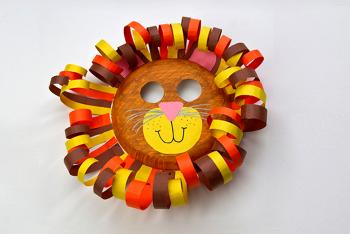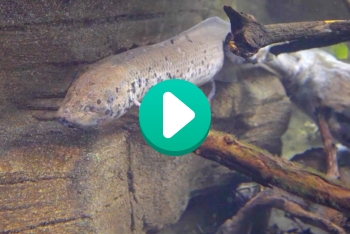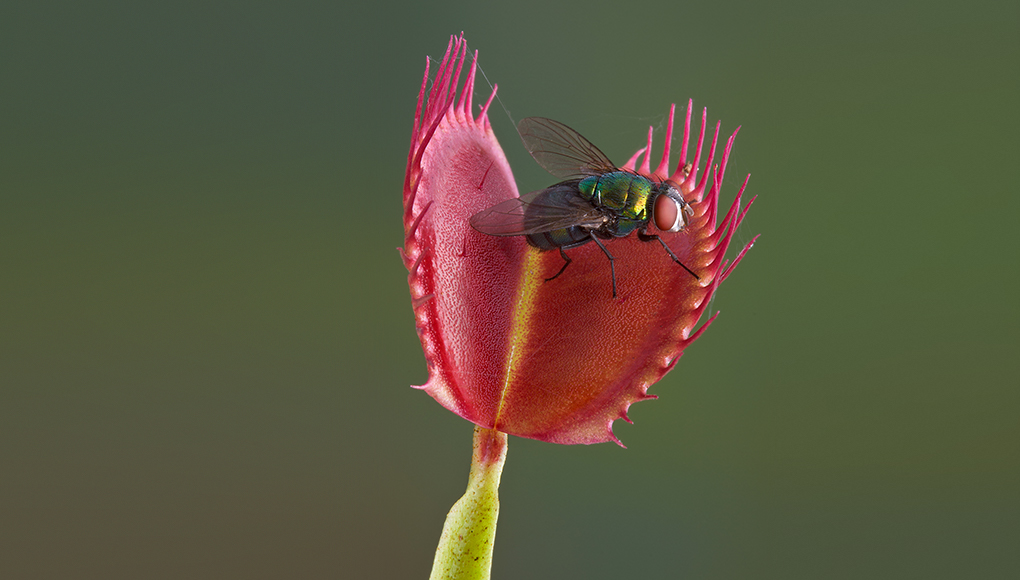
Gotcha! Carnivorous Plants
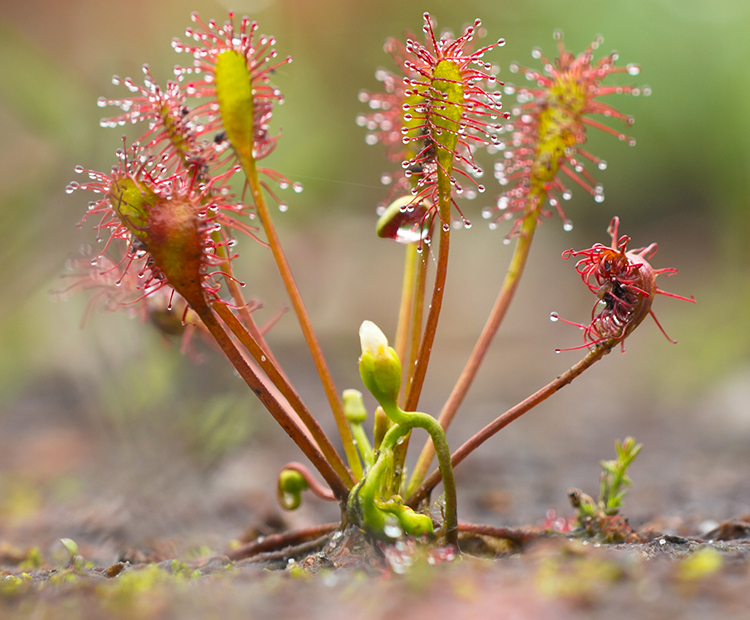
Setting a trap
Many plants get nourishment by photosynthesizing through their leaves. Carnivorous plants do this, but their leaves do double-duty by also trapping live prey! The plants get extra nutrients from feeding on insects and very small amphibians and reptiles.
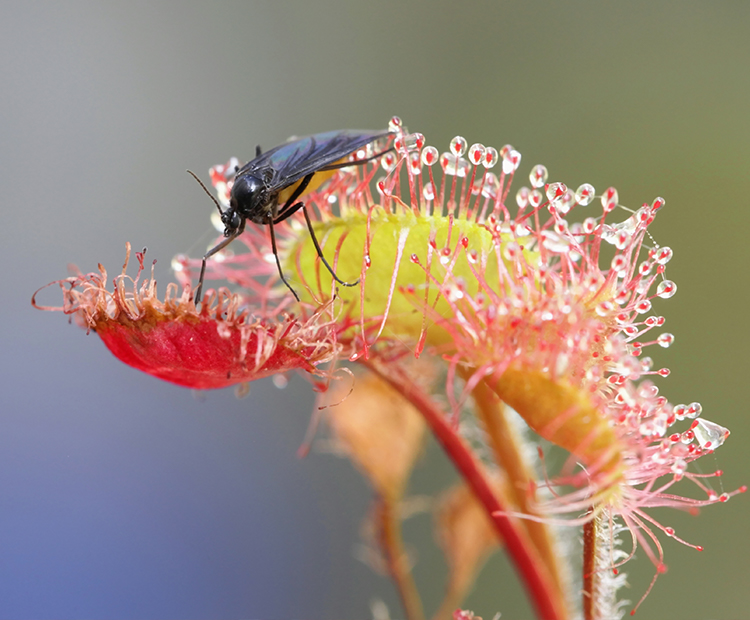
Gotcha!
A sundew plant’s spoke-shaped leaves have sparkly beads of nectar all over. The drops are sticky. When an insect lands to drink, it gets trapped. As it struggles to get loose, the plant’s tentacles curl in, moving the prey to the center where it is digested.
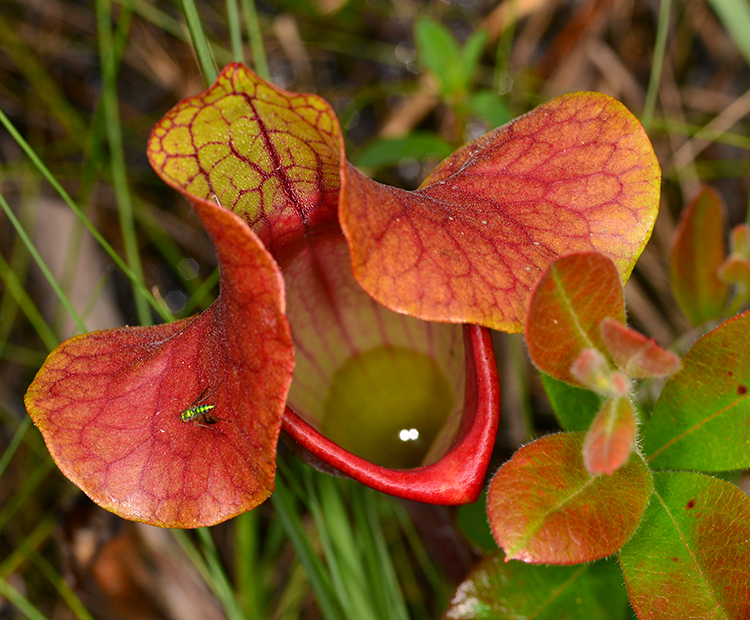
Slip and splash
The leaves of a pitcher plant form a tube with a sort of lid. Nectar glands on the inside of lid ooze a liquid that is sweet and draws insects. But the nectar also has something in it that makes the drinker unsteady. The insect usually falls down the tube into a pool of digestive liquid.
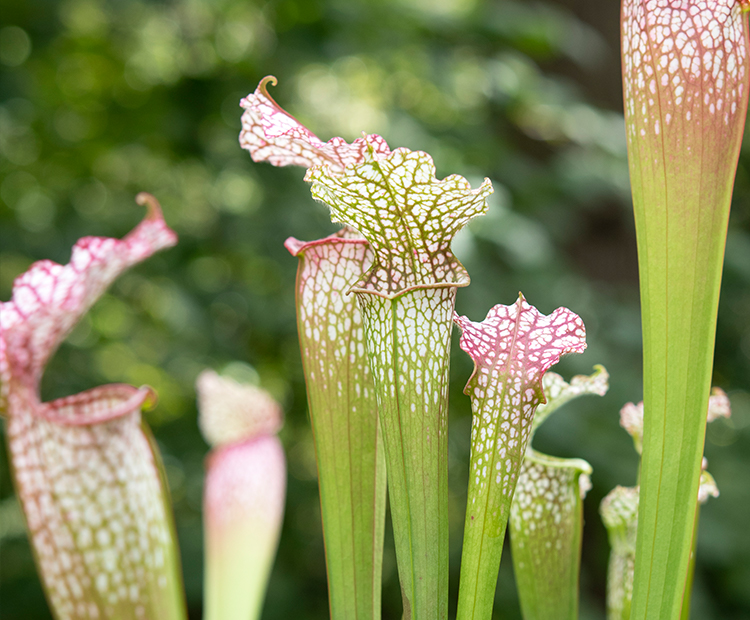
Trapped!
Why doesn’t the insect just climb out? All along the inside of the tube are stiff, sharp spikes pointing downward. style And remember, the nectar has made the insect not feel very well. Cut a pitcher plant open, and you can see what prey it has caught.
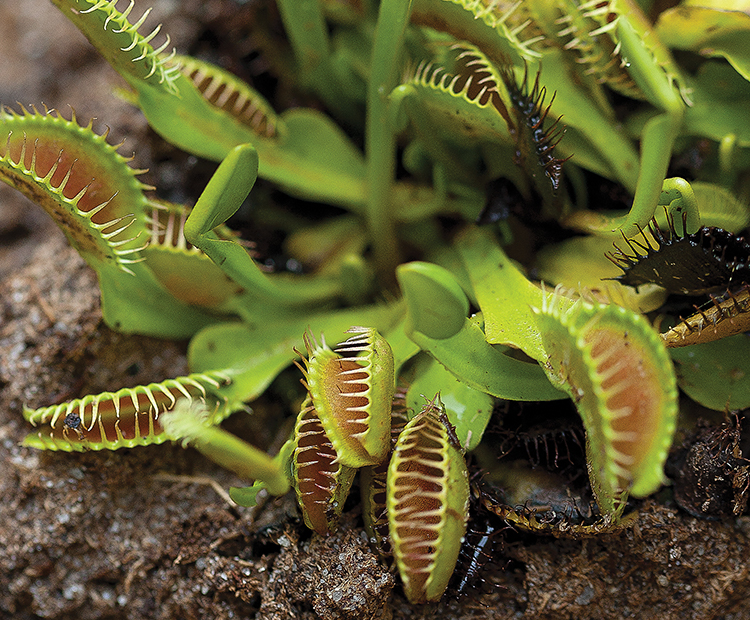
The snap trap
One of the best-known carnivorous plants is the Venus flytrap. Its two leaf blades have tooth-like projections on the outer edge. The reddish inside surface has stiff, touch-sensitive “hairs” that serve as triggers. When two of the hairs are brushed, the leaves snap shut! If the prey is tiny enough, it can escape through the teeth. Larger creatures get dissolved and digested by the plant.

